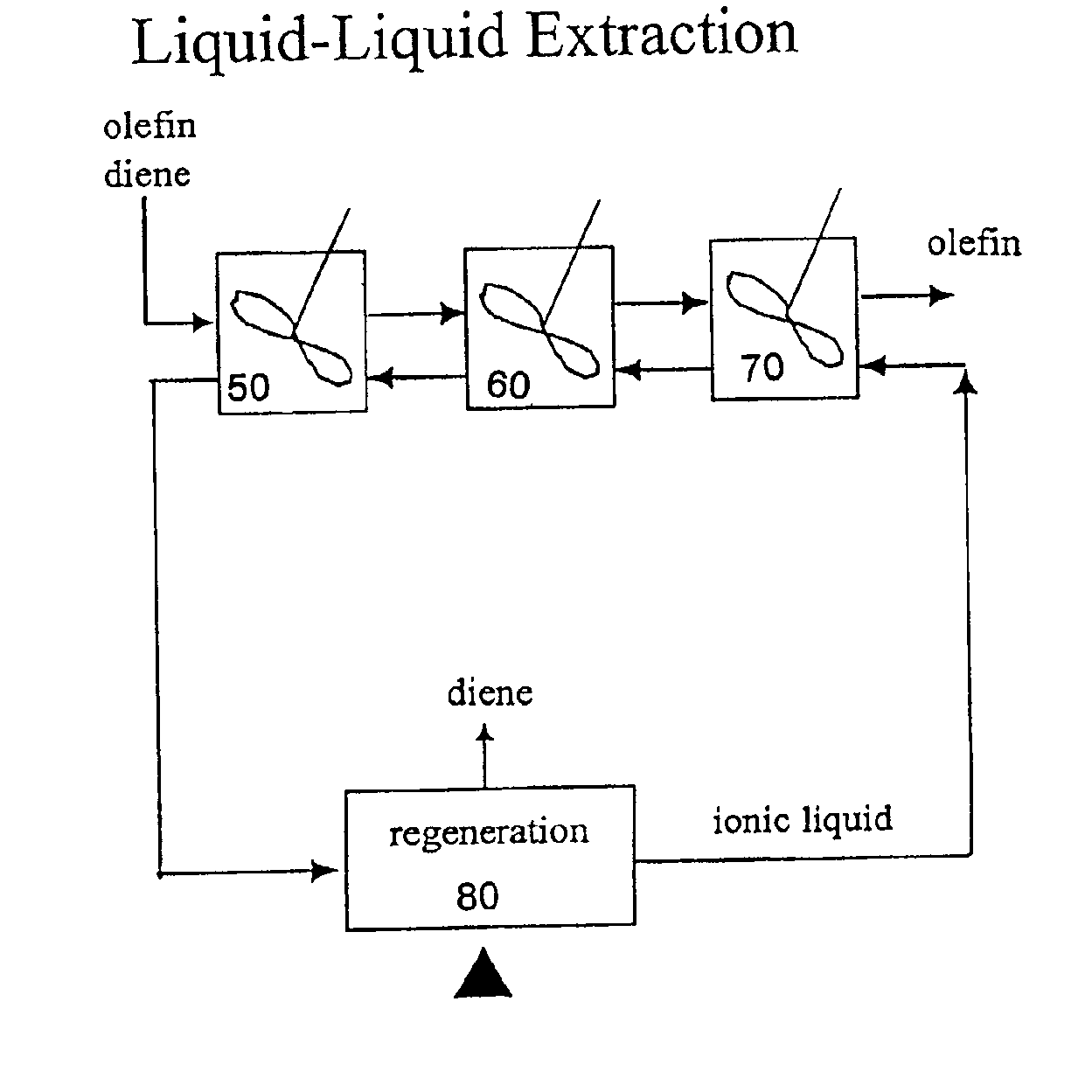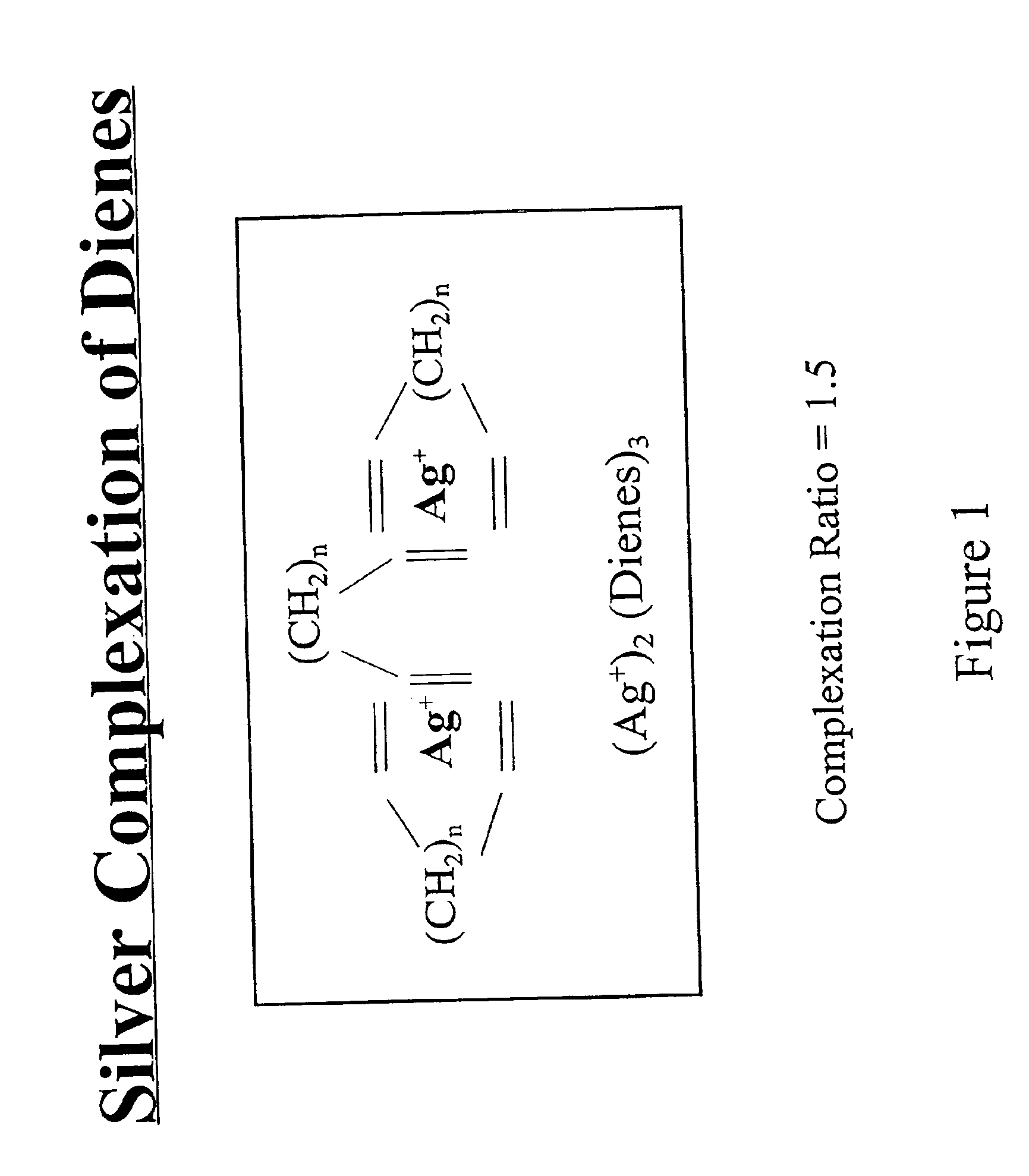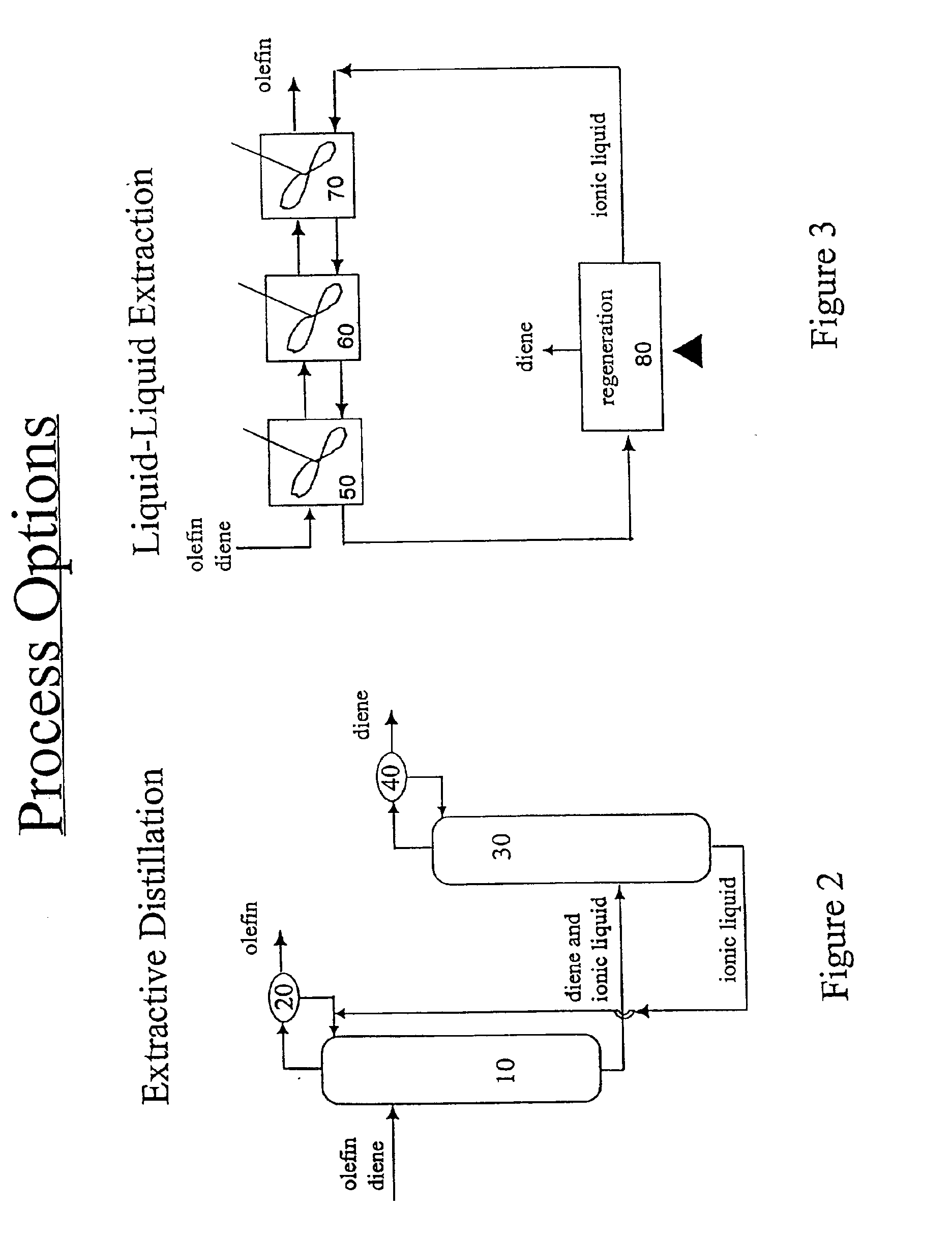Separation of dienes from olefins using ionic liquids
a technology of ionic liquid and dienes, which is applied in the field of organic separation, can solve the problems of inability to remove paraffins, process cannot remove paraffins, and known catalysts are toxic, corrosive, volatile and environmentally harmful, etc., and achieve the effect of facilitating the dissolution
- Summary
- Abstract
- Description
- Claims
- Application Information
AI Technical Summary
Benefits of technology
Problems solved by technology
Method used
Image
Examples
example 1
Synthesis of Neutral Ionic Liquids
A variety of quaternary amine ionic liquid precursors were prepared as follows. 1-Methylimidazole was measured into a stainless-steel autoclave along with a slight molar excess of 1-chlorobutane. The autoclave was sealed, pressurized with 75 psig of nitrogen, and heated to 90° C. for 18 h. The autoclave was then cooled to room temperature and the contents were placed on a rotary evaporator at 95° C. for several hours to remove any unreacted chlorobutane and 1-methylimidazole. A 1H NMR of the product indicated the formation of 1-butyl-3-methylimidazolium chloride (bmim+Cl−). The reaction was repeated with 1-chlorohexane to give 1-hexyl-3-methylimidazolium chloride (hmim+Cl−). This general procedure was repeated with pyridine to give the ionic liquid precursors N-butylpyridinium chloride (butpyr+Cl−) and N-hexylpyridinium chloride (hexpyr+Cl−), although a higher reaction temperature (130° C.) was required to achieve high yields.
Two different procedure...
example 2
Solubility of Cu and Ag complexes in Ionic Liquids
The present example investigated the possibility of immobilizing Ag and Cu ions in an ionic liquid. The Ag(I) and Cu(I) compounds have been proposed for use in the selective complexation of dienes over mono-olefins. The immobilization of these ions can be accomplished by either dissolving Ag and Cu salts in an existing ionic liquid or by reacting an ionic liquid precursor with a Ag or Cu complex to create a new ionic liquid.
Several screening reactions were conducted to determine whether Ag and Cu complexes were soluble in ionic liquids. The results are summarized in Table 2.
TABLE 2Solubility of Ag and Cu ion in ionic liquidsIonic Liquid or PrecursorSaltSoluble?Bmim+BF4−AgBF4YesBmim+PF6−AgPF6NoBmim+Cl−AgClNoHmim+Cl−AgClNoHexpyr+Cl−AgClNoBmim+Cl−CuClYesHmim+Cl−CuClYesHexpyr+Cl−CuClYes
As shown above, an attempt was made to dissolve the Ag salts in ionic liquids that contained the same anions. For example, AgBF4 was combined with bmim+BF...
example 3
Use of ionic Liquids Containing Aq(I) and Cu(I) Salts for Diene Coordination
This example evaluated the use of Ag(I) and Cu(I) compounds immobilized in ionic liquids for the selective complexation of dienes. The adsorption of 1-butene gas by the ionic liquid samples was measured and is summarized in Table 3. The ionic liquid samples containing varying amounts of dissolved AgBF4 showed reversible absorption of the butene gas while the ionic liquids containing the CuCl2− anion did not show any appreciable absorption. For the Ag-containing ionic liquids, the ratio of butene absorbed to Ag was slightly higher than 1. This suggests that the Ag coordinates more than one olefin at a time which would make an Ag-diene complex more thermodynamically stable. Therefore, these Ag-containing ionic liquids are able to selectively coordinate dienes over mono-enes.
As a control experiment, the Ag-containing ionic liquids were also tested for butane absorption. No appreciable absorption was detected. T...
PUM
| Property | Measurement | Unit |
|---|---|---|
| Temperature | aaaaa | aaaaa |
| Temperature | aaaaa | aaaaa |
| Temperature | aaaaa | aaaaa |
Abstract
Description
Claims
Application Information
 Login to View More
Login to View More - R&D
- Intellectual Property
- Life Sciences
- Materials
- Tech Scout
- Unparalleled Data Quality
- Higher Quality Content
- 60% Fewer Hallucinations
Browse by: Latest US Patents, China's latest patents, Technical Efficacy Thesaurus, Application Domain, Technology Topic, Popular Technical Reports.
© 2025 PatSnap. All rights reserved.Legal|Privacy policy|Modern Slavery Act Transparency Statement|Sitemap|About US| Contact US: help@patsnap.com



